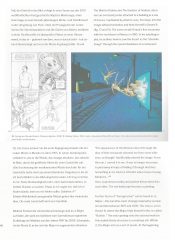French comic book artist extraordinaire Jean Giraud, better known as MOEBIUS, (1938 – 2012) is the topic of a huge exhibition currently at the Max Ernst Museum Brühl, Germany. The show is stocked with roughly 450 works.
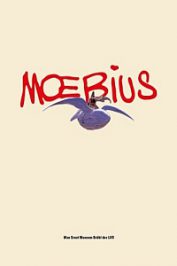 It covers more or less everything from his notebooks (“carnets”), to comics, “sketched drawings, abstract paintings, up to his popular printed graphics, the spectrum of his fascinating art of drawing is spread out before our eyes. This exhibition of the work of Mœbius is the result of an exclusive cooperation with Mœbius Production.”
It covers more or less everything from his notebooks (“carnets”), to comics, “sketched drawings, abstract paintings, up to his popular printed graphics, the spectrum of his fascinating art of drawing is spread out before our eyes. This exhibition of the work of Mœbius is the result of an exclusive cooperation with Mœbius Production.”
Quite fittingly, the Max Ernst Museum is hosting this visionary’s works. As Max Ernst, German surrealist and Dada artist, can easily be credited with introducing the world to surreal spheres, dream-like and blurred realities, and very unusual ways of experiencing the world and transforming it into art and drawings. The pioneer of the 1920s and 30s paved the way for the fantastic and unreal ways of other visual artists.
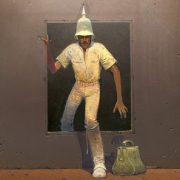 A certain continuation of the same experimental and surreal style can be found in the works of Moebius, who over the years created very different artistic styles and comic book characters like Major Grubert, space travelers Stel and Atan, John Difool or Arak the warrior. His most popular character probably was the – comparatively realistic and straightforward – hero of the Western series Blueberry.
A certain continuation of the same experimental and surreal style can be found in the works of Moebius, who over the years created very different artistic styles and comic book characters like Major Grubert, space travelers Stel and Atan, John Difool or Arak the warrior. His most popular character probably was the – comparatively realistic and straightforward – hero of the Western series Blueberry.
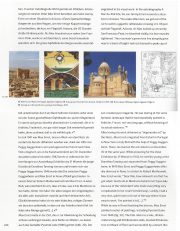
It was first printed in 1963 and Moebius for the next 40 years, with interruptions, together with Belgian scenarist Jean-Michel Charlier created his many adventures. (In contrast, Moebius’ science-fiction series are mostly hard to follow, sometimes lacking logic or chronology and had a very surrealist quality; a feature he was always admired for by fans worldwide). His ink style for Blueberry was very different from his other works, and he initiated this project under the pseudonym of “Gir”.
Blueberry, that was turned into a highly psychedelic 2004 movie, was only one direction this multi talented artist went. Moebius also ventured into TV commercials and had a hand in other film productions (Alien, The Fifth Element), the cartoon adaptation of Little Nemo in Slumberland, worked together with Stan Lee for The Silver Surfer comics and continued various other projects.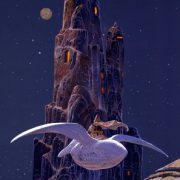
The heavy 10 x 12 x1,5″ bilingual (English/German) 272 page catalog, edited and introduced by museum director Achim Sommer, accompanies the exhibition. It features brief, but excellent texts by Patrick Blümel, Frederike Voßkamp, Isabelle Giraud and many quotations and original thoughts by Moebius.
The majority of the space, however, is devoted to more than 260 of his breathtaking drawings and illustrations from all his creative decades on heavy paper in art print quality, mostly as full page.
Moebius spent some time in Algeria and Mexico, where he experienced the deserts, mind-expanding drugs and bizarre mountains, rock formations, plants and color schemes, which would strongly influence his monumental science-fiction scenarios and picture backgrounds and at times inform the dystopian surroundings his heroes would travel.
“Although the landscape and architecture in The Horny Goof, Arzach, and The Airtight Garage have some vague similarities to what we know, there are no real locations that can be identified as reference points.
Rather, the individual set pieces fit into the fantastic narratives so perfectly, that the viewer never has the impression that it could be a place that exists outside the cartoonist’s imagination: the fragments of the real landscape have been seamlessly woven into Moebius’ cosmos.”
The current exhibition at the Max Ernst Museum Brühl des LVR closes February 16, 2020, the catalog is available online at the museum shop.
Review by Dr. A. Ebert © 2019
Achim Sommer (ed.) Mœbius. Max Ernst Museum Brühl des LVR, 2019, 272 p.

